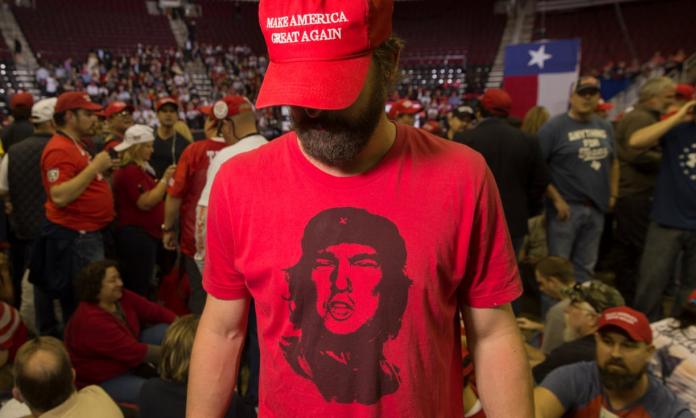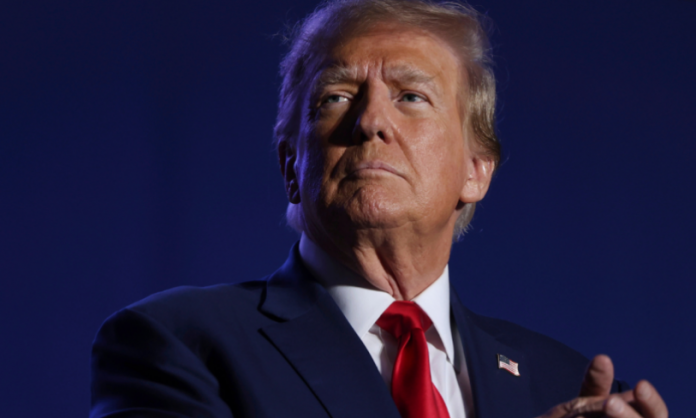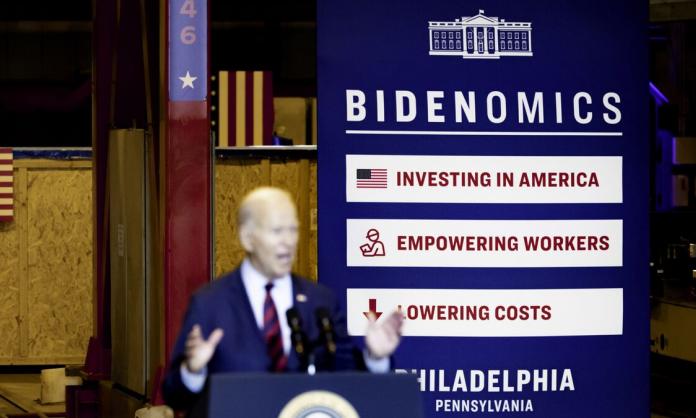South Carolina, they say, loves the Bush family. It’s a largely conservative state, ranked the fifth most religious in the United States. Voters there delivered for George H.W. and his son George W. in their respective Republican Party primaries, and again in the general elections, as the two went on to become the 41st and 43rd US presidents. So when Donald Trump unleashed bitter tirades against the Bush dynasty during the state’s 2016 Republican primary debate—suggesting that 91-year-old Barbara Bush would have been a stronger candidate than her son Jeb, blaming George W. for the 9/11 terrorist attacks and refusing to walk back an earlier comment that W. should have been impeached over the Iraq invasion—some of his conservative opponents thought that the New York billionaire finally had gone a bridge too far.
Senator Lindsey Graham, interviewed after the debate on CBS television, called himself “the happiest man in South Carolina” because Trump had reached “a level of nut job that we haven’t seen before” and would be repudiated by Republican voters for a more traditional candidate. Eliana Johnson, Washington editor at the National Review, one of the leading magazines of US conservatism, predicted that, if Trump now crashed, the debate would be considered the turning point of the campaign. “The diatribe he directed at former president George W. Bush ... was the source of his undoing ... Bush remains one of the most popular politicians in the state”, she wrote.
Politico quoted senior Republican strategist Curt Anderson as saying: “Everything we know about political strategy suggests that Trump’s decision to attack George W. Bush will backfire. If it doesn't backfire, then it will be official; nothing can stop him”. A week later, Trump won the state by double digits in a field of six. And he won the largest share of evangelical Christians, despite having defended Planned Parenthood. Jeb Bush won just 8 percent of the vote and dropped out of the race. One by one over the next months, so did the rest of the field. “Everything we know” was upended.
Yet Trump didn’t come out of nowhere. Three years earlier, Brookings Institution senior fellow Thomas Mann and American Enterprise Institute resident scholar Norman Ornstein argued that Republicans had become “a radical insurgency”. Writing in Dædalus, the Journal of the American Academy of Arts & Sciences, they described the party as “ideologically extreme, scornful of facts and compromise, and dismissive of the legitimacy of its political opposition”. They lamented the damage being done to the stability and legitimacy of government by increasing partisan rancour, manifested in legislative gridlock.
At the centre of the Congressional obstruction was the Tea Party movement, a rebranded right-wing Republicanism financed by the establishment. The movement emerged in 2009, its adherents animated by racial resentment towards a Black president promising transformational change. In words repeated around America, Tea Party followers were determined to “take our country back”. Scores of the movement’s sympathisers were elected to state legislatures, to the Congress and even to governorships over the next two years, doing everything they could to stymie Barack Obama’s agenda—even when it aligned with the Republicans’ own aims.
Some of the motifs evident in Trump’s framing of the US—a country in decline, a conservatism gone soft, a way of life threatened by demographic change, a past to be reclaimed—were prefigured in the Tea Party. So too was his more combative approach, in particular the element of Republican internal conflict and his desire to overturn every legacy of the outgoing Obama administration—a continuation of the war against the 44th president waged by the Republican-controlled Congress from 2011 onwards.
“Essential to the construct of a ‘white race’ is the idea of not being a nigger”, prominent liberal writer Ta-Nehisi Coates wrote in a blistering Atlantic piece a year after Trump’s election. “Before Barack Obama, niggers could be manufactured out of Sister Souljahs, Willie Hortons, and Dusky Sallys. But Donald Trump arrived in the wake of something more potent—an entire nigger presidency with nigger health care, nigger climate accords, and nigger justice reform, all of which could be targeted for destruction or redemption, thus reifying the idea of being white. Trump truly is something new—the first president whose entire political existence hinges on the fact of a black president. And so it will not suffice to say that Trump is a white man like all the others who rose to become president. He must be called by his rightful honorific—America’s first white president.”
No doubt racial resentment was central to the Trumpian moment. Indeed, Trumpism might yet become known as the final howl of the southern strategy—the multi-generational Republican effort, inaugurated in the 1960s, to put an electoral lock on the old Confederacy and drag national politics to the right through endless dog whistling. But situating him in this way cuts against the more popular image of Trump as a radical departure (the “level of nut job that we haven’t seen before”) that his detractors on both the right and the left have promoted.
“Conservatism is an elitist movement of the masses, an effort to create a new-old regime that, in one way or another, makes privilege popular”, political theorist Corey Robin noted in his thought-provoking collection The Reactionary Mind. “Regardless of the means, conservatism has always found a way to conscript the lower orders into its regime of lordly rule. Trump’s ascendancy suggests that the lower orders are no longer satisfied with the racial and imperial privileges the movement has offered them ... Racial dog whistles no longer suffice; a more brazen sound is required. Trump is that sound.”
As Robin observed, Trumpism fits more or less neatly within the frame of mainstream Republican torment. Rather than being a repudiation of the old order, Trump would appear as its logical conclusion: the moment that the Republican base took seriously all the allusions of decades past. The Grand Old Party, as it is often called, has lost the popular vote in all but one presidential election since 1992, having won five of the six elections from 1968 to 1988. Whereas Nixon and Reagan could pull behind them 60 percent of voters, George W. Bush could manage just 51 percent and Trump less than 47 percent.
The inability of the conservative movement to animate a coalition large enough for the Republican Party to enter office or control the federal government through democratic means, left it thrashing around politically. “Like many movements struggling to hold onto power”, Robin wrote, “conservative activists and leaders compensate for their dwindling support in the population by doubling down on their program, issuing ever more strident and racist calls for a return to a white, Christian, free market nation”.
The southern strategy defined Republicanism for more than half a century. But it was not only about race. It was a multidimensional reaction—against feminism, cultural nonconformity and the radical left—which rallied around the family and drew the religious right more consciously and conspicuously into public life. It sewed together a patchwork of grievances, often overlapping, something conservatism has done, Robin noted, since its emergence in the eighteenth century as the movement of “a special type of victim”:
“... one who has lost something of value, as opposed to the wretched of the earth, whose chief complaint is that they never had anything to lose ... It may be a loss of something that was never legitimately owned in the first place; it may, when compared with what the conservative retains, be small. Even so, it is a loss, and nothing is ever so cherished as that which we no longer possess. It used to be one of the great virtues of the left that it alone understood the often zero-sum nature of politics, where the gains of one class necessarily entail the losses of another. But as that sense of conflict diminishes on the left, it has fallen to the right to remind voters that there really are losers in politics and that it is they—and only they—who speak for them.”
So while an element of Trumpism has been present in every Republican leader—and particularly notable in Republican radicals such as Newt Gingrich and Pat Buchanan, and in the Tea Party backlash—what marks out the 45th president is perhaps not the man himself, but the time that was ripe for the arrival of a man like him. For Trump is not simply a function of the malaise and radicalisation of the Republican institution, but of the broader social and political polarisation in the US, something the reduction of Trumpism simply to racism misses, and what his South Carolina performance should have made clear. (As should have his other rhetorical flourishes, such as the strident defence of Medicare and Medicaid, attacks on free trade and the use of the Democratic Party’s left-wing talking points on health care against his Republican rivals.)
US national confidence was badly bruised by the calamitous invasion and occupation of Iraq and then by the collapse of the financial system in 2008. But these were just the icing on the cake of several decades of domestic disintegration—stagnant income growth for all but those at the top, collapsing infrastructure, an explosion of degenerative diseases, wealth polarisation, drug epidemics and widespread food insecurity. As US journalist Matt Taibbi noted recently, the US resembled a Third World country by the time Trump arrived on the scene:
“Before 2016 we saw the first headlines about declining life expectancy among white Americans, and studies showed a clear split: where life expectancy was down or stagnant, Trump did well, while Hillary Clinton won the approval of voters with rising life spans ... A huge part of Trump’s appeal was that those people ... who consider themselves the arbiters of ‘decency’, found him appalling. The general public’s expectations for their votes were so low by 2016 that for many, a Schadenfreude factor was enough incentive to fling faeces in the form of a Trump vote. It wasn’t rocket science and still isn’t.”
While Taibbi is right to highlight the broader, degenerated political motivations of many Trump voters, which mirror the social and economic degeneration of the United States, this “downtrodden masses” explanation is, like the Trumpism=racism narrative, too great a reduction. The 2020 presidential results demonstrate beyond any reasonable doubt that the Trump coalition is broad Republicanism, which has business owners, large and small, at its core and can mobilise a broader base than sick and ailing whites, or ones motivated solely by racial resentment. Trumpism united in an electoral coalition poor whites and scions of the ruling elite, hedonistic money splashers and family-values evangelicals, white supremacists, anti-communist Latinos and some aspirational/entrepreneurial Blacks.
Situating Trump within the broader conservative movement, as Robin does, is a useful way of grappling with the phenomenon. According to him, conservatism is simply the counter-revolution and thrives when it has an adversary in an insurgent left and a decaying or decadent elite incapable of defending the old order. Whether that conception is entirely true, it does illuminate Trump’s rise, his rule and his defeat. So, in 2017, when ruminating on the failures of Trump in office—his inability to get anything done, and his dependence on the very institutions that he was purportedly undermining—Robin mused: “Without a genuinely emancipatory left to oppose, Trump’s rage seems to be nothing more than what it is: the ranting and raving of an old man”.
That now seems apt as a description of Trump not only in office, but of his state since November. And it may well be all that Trump musters for the rest of his career. But the broader insight that Trumpism is a moment in the development of conservatism and that, as Lord Salisbury wrote, “hostility to radicalism, incessant, implacable hostility, is the essential definition of conservatism. The fear that the radicals may triumph is the only final cause that the Conservative Party can plead for its own existence”, is striking when viewed in relation to the dramatic increase in turnout for the president in 2020: an extra 11 million votes compared to 2016.
That mobilisation, although not enough to win Trump a second term, was animated by a campaign framed as Trump vs. the radical left, with the Black Lives Matter movement and the Sanders-backing Congressional Democrats as the key villains. Gone, or significantly muted, were 2016’s attacks on Mexican and Latino immigrants crossing the southern border—in their place, warnings about socialism and communist conspiracies. That in itself is suggestive of the Republicans’ potential future: perhaps less draped in white identity, focused more on trying to be a multicultural party of reaction in an era in which the old southern realignment is exhausted: after all, Virginia is now solidly Democratic, and Georgia has turned blue for the first time in a quarter of a century.
Whatever that future brings, and whether Trump again formally leads the Republican Party, he has cemented himself as the kingpin of conservative reaction in the US. He and his movement are both the product and the defining feature of the time. As long as the conditions that gave rise to them endure, so will Trumpism.










